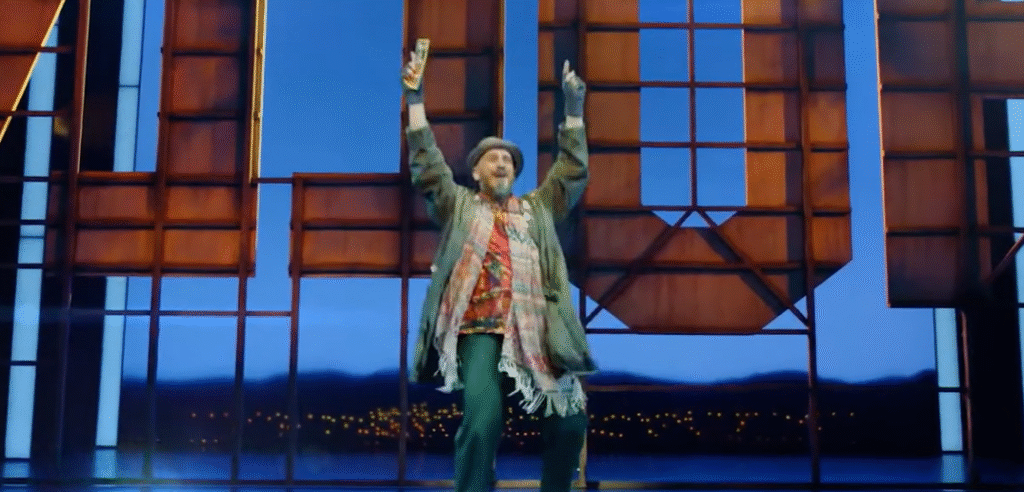The Savoy Theatre, tucked away gracefully along London’s Strand, is a strikingly timeless symbol of artistic sophistication. Its stage has endured centuries of emotional, cultural, and technological change while retaining its aura of unique charm. When Richard D’Oyly Carte opened the theater for business in 1881, he did more than just open a theater—he started a revolution. As a technical marvel and a symbol of creative enlightenment, the Savoy became the first public building in the world to be completely illuminated by electricity.
The theater was intended to be a suitable setting for Gilbert and Sullivan’s operatic genius, whose clever and catchy compositions influenced British theater in the same way that Shakespeare influenced language. Their joint works, such as H.M.S. Pinafore and The Mikado, were exceptionally successful at combining humor and moral nuance. A society in transition, one that embraces progress while learning to laugh at itself, was reflected in each performance. The term “Savoy Operas,” which is still associated with sardonic satire and symphonic delight, was born during the Savoy’s innovative golden age under D’Oyly Carte.
The theater’s architecture was a masterwork of vision. C. It was meticulously designed by J. Phipps, who combined Victorian elegance with contemporary efficiency. Perfect sightlines were ensured by carefully planning each curve and balcony, a design feature that is still incredibly effective today. Its electrification, which changed the atmosphere into something otherworldly for audiences in the 19th century, was the real wonder of the original interiors, which were elegant with gilded decorations and plush velvet seats.
Savoy Theatre – Historical and Cultural Overview
| Attribute | Details |
|---|---|
| Name | Savoy Theatre |
| Location | Savoy Court, Strand, London WC2R 0ET, United Kingdom |
| Opened | October 10, 1881 |
| Capacity | 1,158 seats |
| Architect | C. J. Phipps (original), Basil Ionides, William Whitfield |
| Founder | Richard D’Oyly Carte |
| Owner | ATG Entertainment |
| Notable Productions | Gilbert & Sullivan Operas, Pretty Woman: The Musical, Dreamgirls, Burlesque, Paddington The Musical |
| Rebuilt | 1929 (Frank Tugwell), 1993 (William Whitfield) |
| Reference | Wikipedia – Savoy Theatre: https://en.wikipedia.org/wiki/Savoy_Theatre |

The Savoy’s backstory is as complex as the shows it has presented. The theater continued to change after its operatic heyday, embracing the 20th century’s dramatic experimentation. Here, plays by Tennessee Williams, Noël Coward, and Oscar Wilde found a home, fusing human frailty with wit under chandeliers that once radiated Edison’s groundbreaking genius. Although war still loomed large over London at the time of Blithe Spirit’s 1941 premiere, the Savoy offered laughter as a form of resistance—a gesture that was both incredibly uplifting and deeply symbolic.
In 1990, a fire destroyed most of the building, leaving it completely destroyed but not forgotten. The result was a restoration that respected history and was remarkably durable. Leading the reconstruction was architect William Whitfield, who subtly updated the building’s technical systems while preserving its 1929 Art Deco design. The 1993 reopening was more than just a comeback; it was a resurrection. Entering the shining foyer, audiences characterized the experience as “walking into the past, reborn.”
Rich emerald hues, mirrored walls, and flowing curves characterize the theater’s current design, which reflects a conversation between modernity and nostalgia. The theater feels “alive,” as if its walls hum with the echoes of centuries of applause, according to patrons of Burlesque or Pretty Woman: The Musical. The small size of the venue significantly adds to this impression, making performances feel intimate—almost whispered—between the performer and the audience.
From the heartbreak of A Little Life to the humor of Legally Blonde, the productions presented here have been remarkably diverse. Its versatility highlights the theater’s durability. Seldom can a venue move so smoothly from Victorian operettas to feminist musicals without becoming disjointed, but the Savoy has done so consistently. The elaborate ceiling makes every show feel comfortable, which is a credit to the direction and design.
With Paddington The Musical, the Savoy is capturing the public’s attention once more today. The public’s desire for happiness and togetherness is reflected in this adaptation, which marks the 65th anniversary of the bear that loves marmalade and marks a noticeably gentle shift toward family storytelling. The success of the show demonstrates how the theater still manages to strike a balance between artistic integrity and commercial appeal, a task that many contemporary institutions find intimidating.
The Savoy’s emotional texture, however, is what makes it significant beyond its repertoire. Attending a performance here feels almost ceremonial to many Londoners, demonstrating the enduring power of art. Beyond just reflecting light, the art deco gleam in the foyer symbolizes the persistence of artistic endeavors across generations. Once-attending couples may now watch their grandchildren enjoy Paddington, connecting their individual histories to a common cultural icon.
Few other venues have the synergy between stage and society that this one does, and its close proximity to the prestigious Savoy Hotel adds to the glitz. The hotel’s reputation as the center of upscale entertainment was further cemented when its patrons, who ranged from Frank Sinatra to contemporary royalty, frequently entered the theater for an evening of elegance. The theater and hotel work together to create an ecosystem of luxury, creativity, and London personality.

